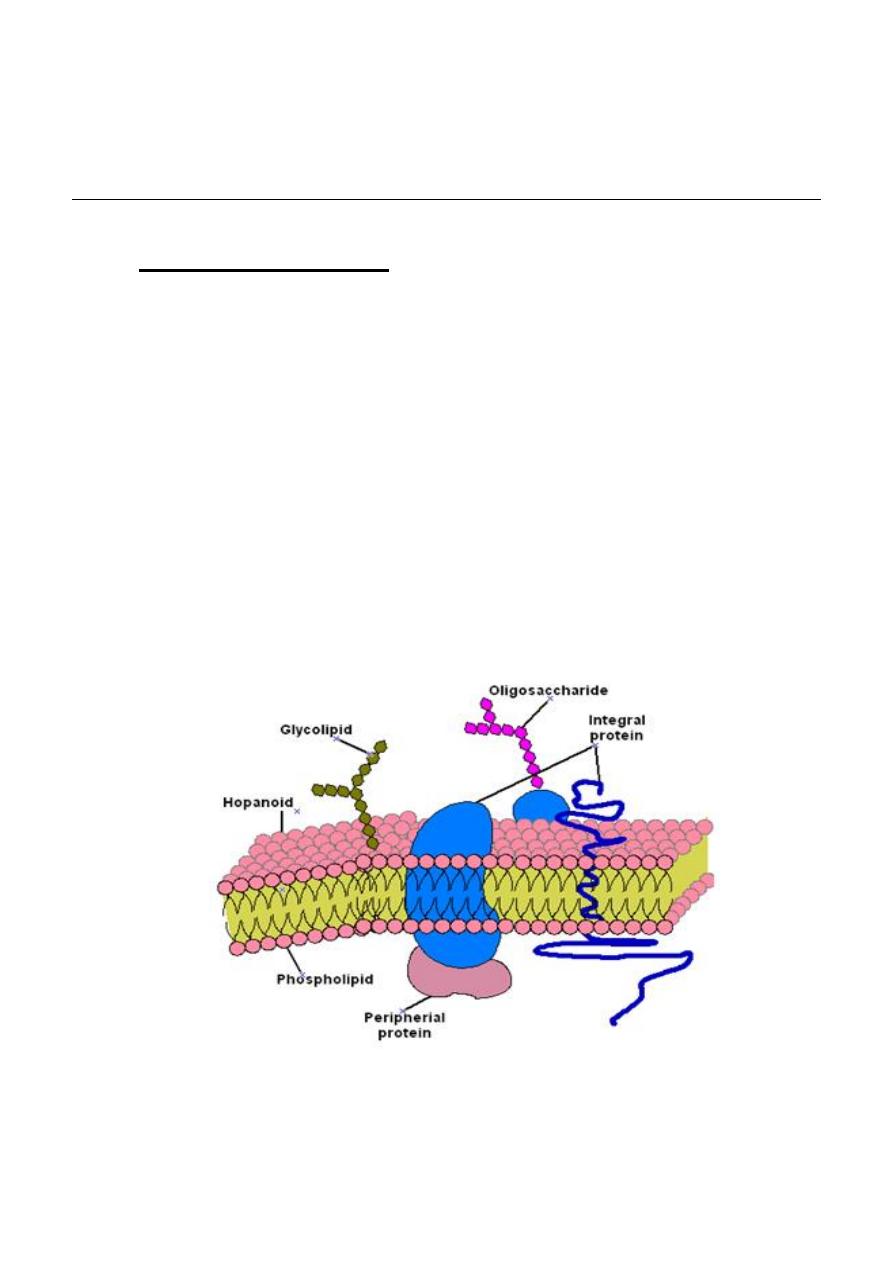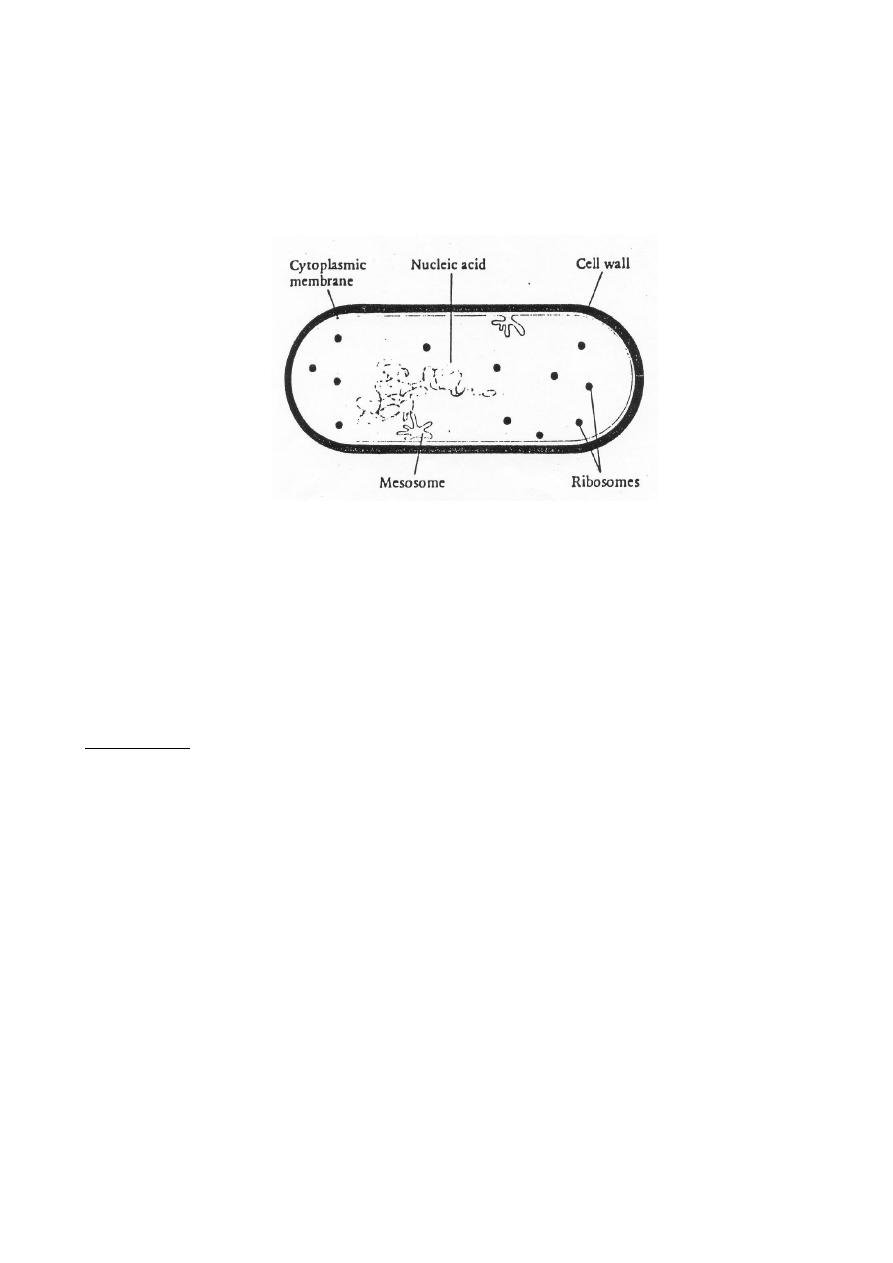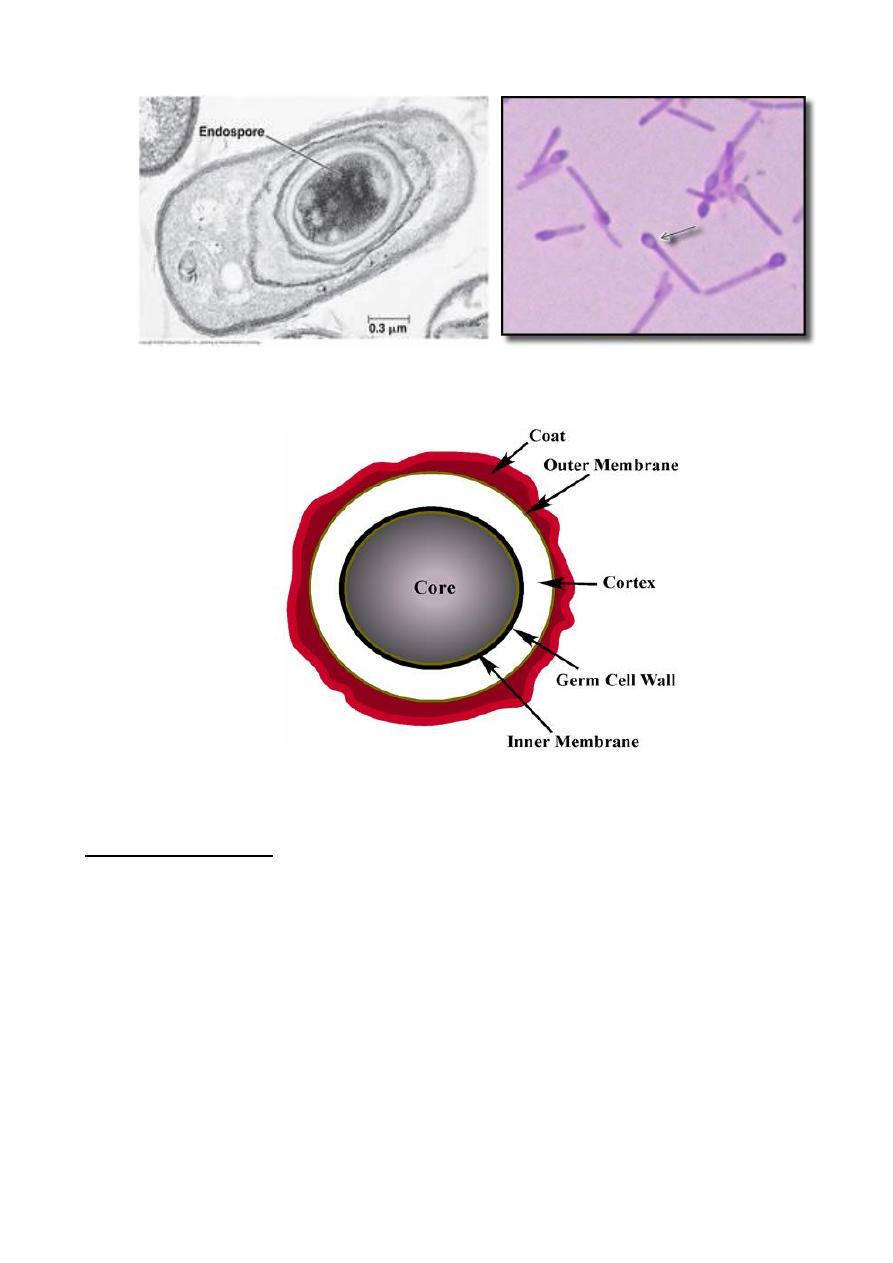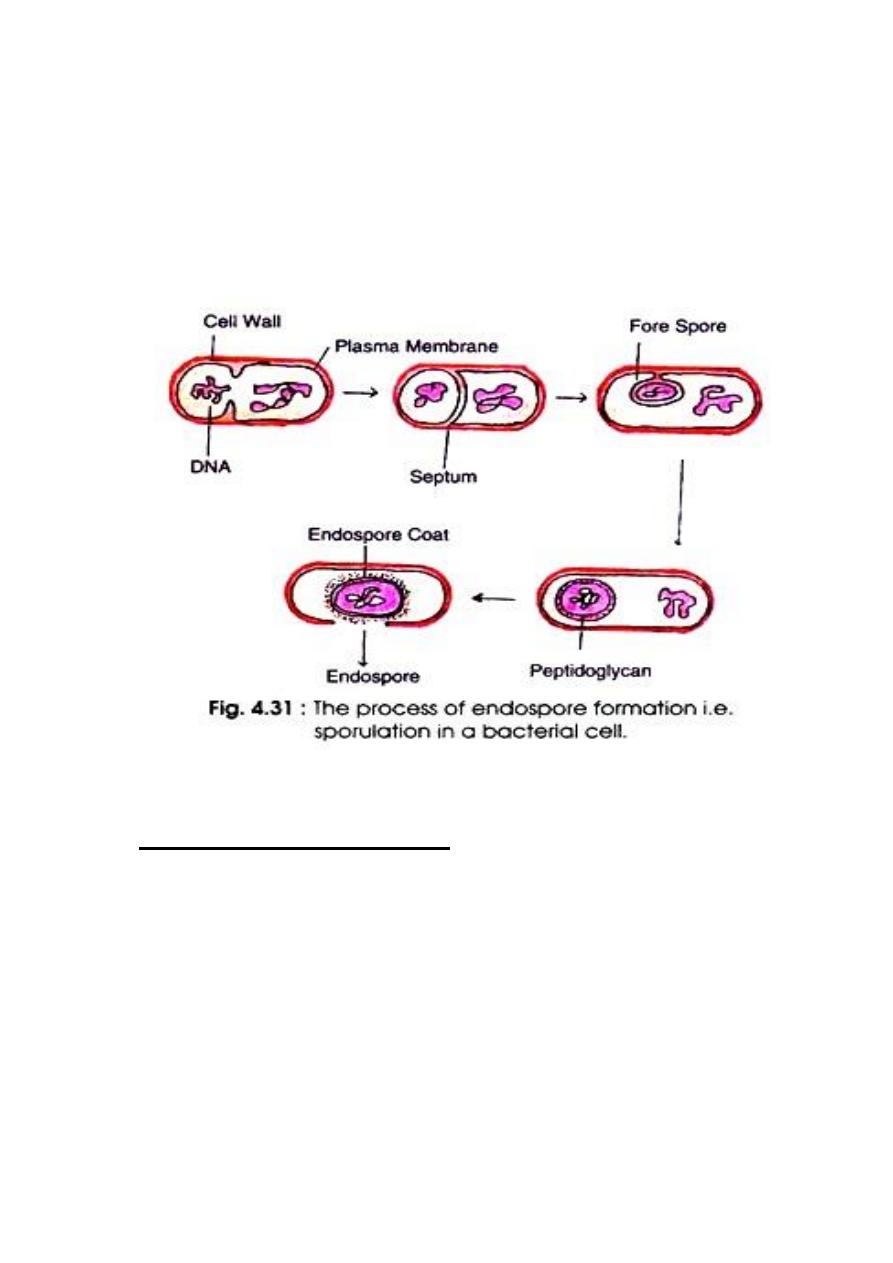
1
Course: Microbial physiology
Lecturer: Dr. Weam Saad
Lecture: Microbial Structure and functions
Intracellular Components
1. Plasma (Cytoplasmic) Membranes
Bacterial plasma membranes are composed of proteins and lipids
(phospholipids). Protein-to-lipid ratios of bacterial plasma membranes are
approximately 3: 1, close to mitochondrial membranes, but membranes from
Gram-positive bacteria have lipoteichoic acid which not present in the Gram-
negative membranes.
Plasma membranes are the site of active transport, respiratory chain
components, energy-transducing systems, the ATPase of the proton pump, and
membrane stages in the biosynthesis of phospholipids, peptidoglycan, LPS, and
capsular polysaccharides. Bacterial DNA is also attached to cell membrane. The
bacterial cytoplasmic membrane is a multifunction structure and similar to
mitochondrial transport and biosynthetic functions of eukaryotic cells.

2
2. Mesosomes
Found mostly in Gram-positive bacteria and formed by an invagination folded
of the plasma membrane. These structures equivalent to bacterial mitochondria;
they produce, have role in DNA replication and cell division cycle.
3. Other Intracellular Components
Ribosomes of the 70S type; ribonucleoprotein particles are not arranged on a
membranous rough endoplasmic reticulum as they are in eukaryotic cells, they are
found in the cytoplasm.
Endospores are highly heat-resistant, dehydrated cells formed
intracellularly in members of some bacteria like Bacillus and Clostridium.
Sporulation, the process of forming endospores because of many biochemical and
morphologic changes begins in the stationary phase of the vegetative cell cycle
due to decrease nutrients (sources of carbon and nitrogen).
The spore protoplast, or core, contains a complete nucleus, ribosomes, and
energy generating components. During germination, the spore wall becomes the
vegetative cell walland cortex will be released.

3
Sporulation Stages:
1. Stage 0, vegetative cells with two chromosomes at the end of exponential
growth.
2. Stage I, formation of axial chromatin filament and excretion of exo-
enzymes, including proteases.
3. Stage II, formation of spore septum and separation of nuclear material into
two parts.
4. Stage III, spore protoplast formation and increase of enzymes.
5. Stage IV, cortex formation of spore.
6. Stage V, spore coat protein formation.

4
7. Stage VI, spore maturation, formation of unusual peptidoglycan which
contains calcium dipicolinate, help in resistance to heat, radiation, pressure,
and organic solvents.
8. Stage VII, final maturation and liberation of endospores from mother cells
(in some bacterial species endospore stay inside the mother cell).
Genetic Information In Bacteria
Bacteria have two genetic materials: bacterial chromosome and plasmids. Both
are DNA and called genotype, the role of them is replication and expression to
produce the phenotype or bacteria characteristics. Most bacteria have a haploid
genome, a single chromosome consisting of a circular, double stranded DNA
molecule.
The DNA is supercoiled and tightly packaged in the bacterial nucleoid. The
time required for replication of the entire chromosome is about 40 minutes, which
is approximately twice the shortest division time for this bacterium. DNA
replication must be initiated as cells divide, so in rapidly growing bacteria a new

5
round of chromosomal replication begins before an earlier round is completed.
Thus, the chromosome in rapidly growing bacteria is replicating at more than one
point. The replication of chromosomal DNA in bacteria is complex and involves
many different proteins.
Plasmids
Plasmids are replicons, extrachromosomal genetic elements in bacteria.
They are usually much smaller than the bacterial chromosome. Plasmids usually
encode properties that are not essential for bacterial viability, and replicate
independently of the chromosome.
Most plasmids are supercoiled, circular, double-stranded DNA molecules,
but linear plasmids have also been demonstrated in Borrelia and Streptomyces.
Conjugative plasmids, large plasmids, that also promote transfer of the bacterial
chromosome from the donor bacterium to other recipient bacteria are called
fertility plasmids, and are discussed below. While small plasmids are usually non-
conjugative.
Many plasmids control medically important properties of pathogenic
bacteria, including resistance to one or several antibiotics, production of toxins,
and synthesis of cell surface structures required for adherence or colonization.
Plasmids that determine resistance to antibiotics are often called R plasmids (or R
factors). Representative toxins encoded by plasmids include heat-labile and heat-
stable enterotoxins of E coli, exfoliative toxin of Staphylococcus aureus, and
tetanus toxin of Clostridium tetani. Some plasmids are cryptic and have no
recognizable effects on the bacterial cells that harbor them.
Phage typing is the testing of strains of a particular bacterial species for
susceptibility to specific bacteriophages. The patterns of susceptibility to the set
of typing phages provide information about the possible relatedness of individual
clinical isolates. Such information is particularly useful for epidemiological
investigations. Example of phage typing is Corynebacterium diphtheria is normal
flora but when this bacteria get infected with toxin phage that contain genes encode
for toxin this bacteria will be toxogenic virulent and cause diphtheria disease.

6
